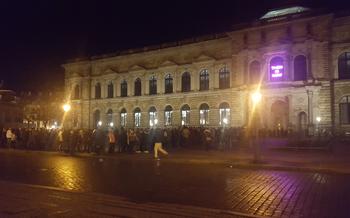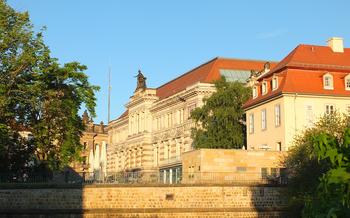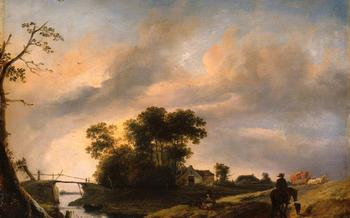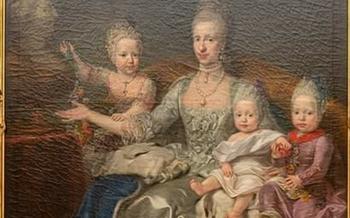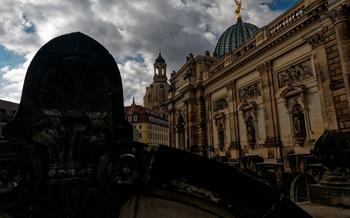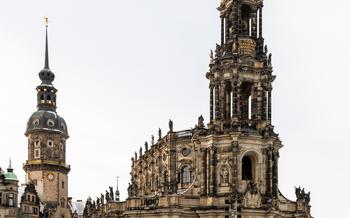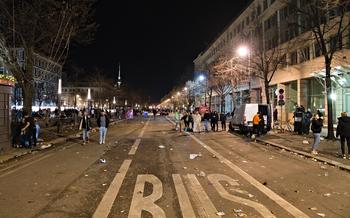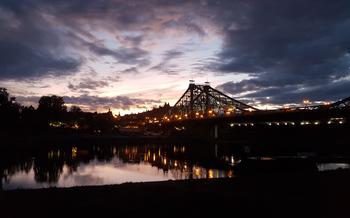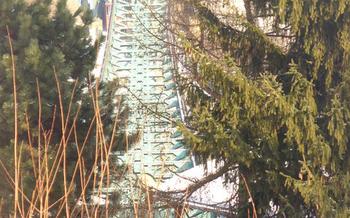
Skulpturensammlung
- Overview of the Skulpturensammlung
- Collections:
- German Gothic Sculpture:
- Renaissance and Baroque Sculpture
- Neoclassicism and Romanticism
- Early 20th-Century Sculpture: A Reflection of Societal Change
- Post-World War II Sculpture:
- Educational Programs:
- Accessibility:
- Nearby Attractions:
- Dining and Shopping:
- Getting There:
- Insider Tip: Unveiling Hidden Gems and Secret Spots
Overview of the Skulpturensammlung
The Skulpturensammlung, or Sculpture Collection, is a renowned institution in Dresden, Germany, dedicated to the preservation and display of sculptures from the Middle Ages to the present day. It is housed within the Albertinum, a magnificent building situated on the banks of the Elbe River, which also accommodates the Gemäldegalerie Alte Meister, or Old Masters Picture Gallery. The Skulpturensammlung was established in 1835 as part of the Royal Collection of Antiquities and has since grown to become one of the most significant sculpture collections in Germany. With over 25,000 sculptures, the collection offers a comprehensive overview of the history of sculpture in Germany and Europe.
Collections:
The Skulpturensammlung's diverse collections offer a comprehensive survey of German sculpture from the Middle Ages to the present day. One of its highlights is the collection of German Gothic sculpture, which includes masterpieces such as the "Madonna and Child" by Hans Multscher and the "Crucifixion Group" by Tilman Riemenschneider. The Renaissance and Baroque period is also well-represented, with works by Peter Vischer the Elder, Hans Holbein the Younger, and Andreas Schlüter.
A unique feature of the museum is its sculpture garden, which displays an impressive array of works from the 19th and 20th centuries. Here, visitors can admire sculptures by Auguste Rodin, Max Klinger, and Ernst Barlach, among others. The garden provides a serene setting to contemplate the works of art while enjoying the fresh air and greenery.
German Gothic Sculpture:
The 13th century marked a significant turning point in German art, characterized by the emergence of Gothic architecture and sculpture. German Gothic sculpture, influenced by the Rayonnant style from France, flourished in the 14th and 15th centuries. It found expression in numerous cathedrals, churches, and town halls across the country.
The Gothic period witnessed the rise of sculpture as an independent art form, no longer solely confined to architectural ornamentation. Sculptors began to create freestanding works, often depicting religious figures, saints, and biblical scenes. The Gothic style emphasized naturalism and emotional expression, capturing the essence of human suffering, joy, and devotion.
Notable German Gothic sculptors include Nicolaus Gerhaert van Leyden, known for his expressive wooden sculptures, and Tilman Riemenschneider, whose works showcased intricate details and a mastery of drapery. Their sculptures, often commissioned by wealthy patrons and ecclesiastical institutions, adorned altars, pulpits, and choir stalls, adding to the grandeur of Gothic interiors.
German Gothic sculpture played a crucial role in shaping the visual identity of the period and laid the foundation for the development of Renaissance and Baroque styles that followed.
Renaissance and Baroque Sculpture
The influence of the Italian Renaissance and Baroque art on German sculpture was profound. German artists such as Veit Stoss and Tilman Riemenschneider traveled to Italy to study the works of the great masters, such as Michelangelo and Donatello. They returned to Germany with new ideas and techniques, which they incorporated into their own work.
Renaissance and Baroque sculptures in Germany are characterized by their naturalism and attention to detail, as well as their emphasis on classical themes and forms. This period also saw the rise of portrait sculpture, as artists sought to capture the likeness of their subjects with increasing accuracy and realism.
Among the most famous German Renaissance and Baroque sculptors are Albrecht Dürer, Hans Holbein the Younger, and Peter Vischer the Elder. Their works can be seen in museums and churches throughout Germany and Europe.
The transition from Gothic to Renaissance style in German sculpture was gradual. While some artists, such as Veit Stoss, continued to work in the Gothic style, others, such as Tilman Riemenschneider, began to adopt Renaissance ideas and techniques. By the early 16th century, the Renaissance style had become dominant in German sculpture.
Neoclassicism and Romanticism
The late 18th and early 19th centuries witnessed a shift towards Neoclassicism and Romanticism in German sculpture. Neoclassicism, inspired by classical Greek and Roman art, emphasized harmony, proportion, and clarity of form. Sculptors such as Johann Gottfried Schadow and Christian Daniel Rauch embraced this style, creating works that exuded a sense of serenity and grandeur.
Romanticism, on the other hand, emphasized emotion, imagination, and individuality. Sculptors like Ernst Rietschel and Ludwig Schwanthaler explored themes of nature, mythology, and the human spirit. Their works were often characterized by dramatic gestures, expressive poses, and a focus on the inner emotional world of the subject.
The transition from Gothic to Renaissance style in German sculpture was gradual and complex. While some Gothic elements persisted into the Renaissance period, new influences from Italy, such as the use of perspective and the study of human anatomy, began to shape the work of German sculptors. This transition can be seen in the works of sculptors like Veit Stoss and Tilman Riemenschneider, who combined Gothic and Renaissance elements in their sculptures.
Early 20th-Century Sculpture: A Reflection of Societal Change
The early 20th century marked a period of significant social and cultural transformation in Germany, and this was reflected in the art of the time. In the realm of sculpture, modernism and expressionism emerged as dominant styles, challenging traditional notions of form and representation.
Modernist sculptors, influenced by the works of Pablo Picasso and Georges Braque, embraced abstraction and fragmentation, breaking away from the conventions of realism. Expressionists, on the other hand, sought to convey inner emotions and subjective experiences, often distorting forms and using bold colors to create a sense of urgency and drama.
One of the most influential German sculptors of this period was Ernst Barlach. His works, characterized by elongated figures and angular forms, explored themes of human suffering and existential angst. Another notable figure was Wilhelm Lehmbruck, known for his sculptures of elongated, melancholic figures that expressed a sense of longing and isolation.
The impact of World War I on German art cannot be overstated. The war's devastation and loss of human life left a profound mark on the psyche of the nation, and this was reflected in the works of sculptors. The horrors of war and the resulting disillusionment found expression in distorted forms, fragmented compositions, and a general sense of despair.
Despite the challenges of the war, German sculpture continued to flourish, producing artists who pushed the boundaries of artistic expression and contributed to the development of modern art.
Post-World War II Sculpture:
After the devastation of World War II, German art underwent a period of reconstruction and renewal. Sculpture played a crucial role in this process, as artists sought to express the collective trauma and resilience of the nation. New directions emerged in German sculpture, characterized by a rejection of traditional forms and materials and an embrace of abstraction and experimentation. Many sculptors turned to welded metal, found objects, and mixed media to create works that reflected the fragmented and chaotic nature of the postwar world. This period also saw the rise of performance art and installation art, which challenged conventional notions of sculpture and its relationship to space. Notable sculptors of this era include Joseph Beuys, Gerhard Richter, and Anselm Kiefer, whose works continue to influence contemporary art.
Educational Programs:
The Skulpturensammlung offers a range of educational programs designed to engage visitors of all ages and backgrounds. Guided tours provide in-depth insights into the museum's collection, with expert guides sharing their knowledge and passion for the artworks. Workshops and lectures delve into specific aspects of sculpture, offering opportunities for hands-on learning and creative exploration.
For students and researchers, the Skulpturensammlung presents a treasure trove of resources. The museum's library houses an extensive collection of books, journals, and archival materials related to sculpture. Access to the collection is granted to students and scholars, fostering research and academic inquiry.
Special exhibitions and events are regularly organized by the Skulpturensammlung, showcasing new acquisitions, thematic displays, and collaborations with other institutions. These events provide a platform for contemporary artists, promote dialogue and exchange, and offer visitors a fresh perspective on the world of sculpture.
Accessibility:
The Skulpturensammlung is committed to providing an accessible and welcoming environment for all visitors. The museum offers a range of services and facilities to ensure that everyone can enjoy the collection and its programs.
The museum is open to the public from Tuesday to Sunday, with varying hours depending on the day. Admission fees are reasonable, with discounts available for students, seniors, and families.
Visitors with disabilities are well-catered for at the Skulpturensammlung. The museum is wheelchair accessible, with ramps, elevators, and accessible restrooms. Guided tours in sign language and audio descriptions are also available upon request.
For a more in-depth exploration of the collection, guided tours are offered in various languages. These tours are led by knowledgeable docents who provide insights into the history, techniques, and significance of the sculptures. Visitors can also participate in workshops, lectures, and special events throughout the year, which offer opportunities for learning and engagement with the collection.
Nearby Attractions:
Beyond the Skulpturensammlung, Dresden offers a multitude of cultural and historical treasures. The Zwinger Palace, with its exquisite Baroque architecture and art collection, is a must-see. The Green Vault, housed within the Residenzschloss, boasts a dazzling display of jewels and artifacts from the Saxon royal treasury. For those interested in modern art, the Albertinum showcases contemporary and modern artworks.
Dresden's rich history is evident in its many landmarks. The Frauenkirche, a magnificent Baroque church, was painstakingly reconstructed after being destroyed during World War II. The Semperoper, renowned for its opera and ballet performances, is a masterpiece of 19th-century architecture. History buffs can explore the Dresden Castle, the former residence of Saxon rulers, and the Brühl's Terrace, a picturesque promenade along the Elbe River.
Dresden's verdant parks and gardens provide a tranquil escape from the urban hustle. The Großer Garten, one of the largest parks in Germany, offers beautiful gardens, a botanical garden, and a miniature railway. The Dresden Zoo, home to over 1,500 animals, is a popular attraction for families. The Elbwiesen, stretching along the Elbe River, is a popular spot for picnics, walks, and bike rides.
Dining and Shopping:
Before or after your visit to the Skulpturensammlung, be sure to explore the surrounding area for dining and shopping opportunities. The neighborhood is home to a variety of restaurants and cafes, from traditional German cuisine to international flavors. For a quick bite, try the nearby Markthalle, a bustling indoor market offering a wide selection of fresh produce, meats, cheeses, and baked goods.
For art enthusiasts, the area is a haven for souvenir shops and art galleries. Pick up a unique piece of art or a souvenir to commemorate your visit to the Skulpturensammlung. You can also find local markets and specialty stores selling handmade crafts, vintage clothing, and other treasures.
Don't miss the chance to visit the Pfund's Molkerei, a historic dairy shop renowned for its delicious ice cream and traditional Saxon specialties. Indulge in a sweet treat while enjoying the charming atmosphere of this beloved local institution.
Getting There:
Reaching the Skulpturensammlung is a breeze, whether you prefer public transportation, personal vehicles, or a leisurely stroll. For those embracing the eco-friendly approach, an array of trams and buses halt right outside the museum, ensuring a seamless journey. Alternatively, if you're arriving by car, ample parking spaces await just a short walk away. And for those who relish the charm of two wheels or prefer to explore on foot, designated bike racks and scenic walking routes offer a delightful approach to the museum.
Insider Tip: Unveiling Hidden Gems and Secret Spots
Venture beyond the main galleries to uncover secret spots and hidden treasures within the Skulpturensammlung. Explore the Sculpture Garden, a tranquil oasis nestled amidst the museum complex, where sculptures harmoniously blend with nature. Take a moment to admire the intricate details of the Renaissance-era fountain or find solace among the serene sculptures adorning the garden paths.
Join one of the themed tours offered by the museum to gain deeper insights into specific periods or themes in German sculpture. These guided tours, led by knowledgeable experts, provide an opportunity to learn about the historical context, artistic techniques, and symbolism behind the masterpieces on display.
For art enthusiasts seeking a unique experience, inquire about the museum's special events and activities. From intimate evening viewings to interactive workshops and lectures, these events offer a chance to engage with the collection in new and exciting ways.
Don't miss the lesser-known gems tucked away in the corners of the museum. Seek out the delicate ivory carvings from the Middle Ages, marvel at the intricate wood carvings of the Renaissance, or discover the expressive bronze sculptures of the early 20th century. These hidden treasures offer a glimpse into the diverse and multifaceted history of German sculpture.
